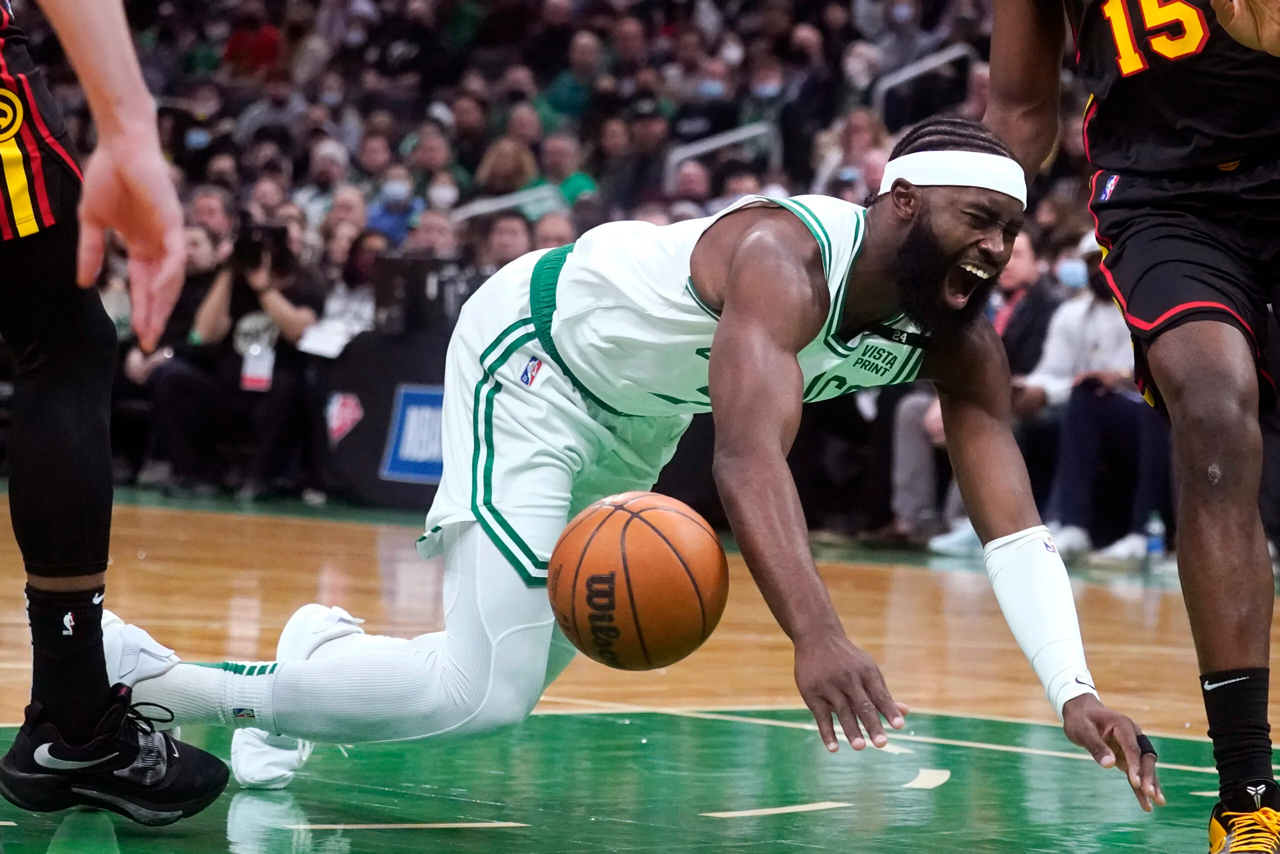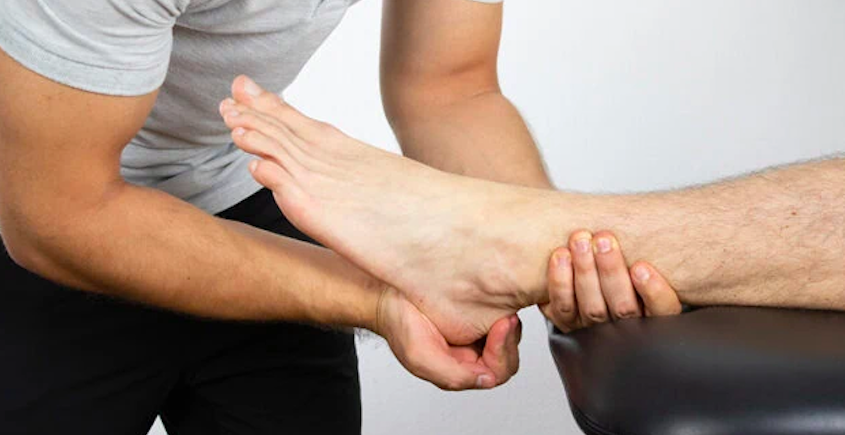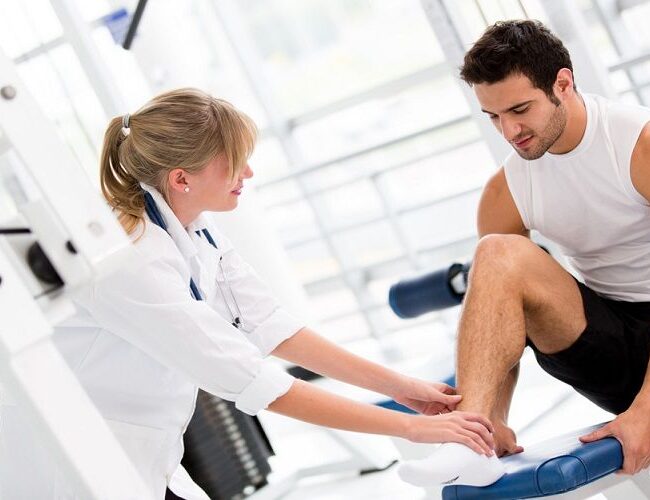- Sports Med U Newsletter
- Posts
- Optimising ACL Rehabilitation: The 6 key areas of focus 🦵🌟
Optimising ACL Rehabilitation: The 6 key areas of focus 🦵🌟
Sports Med U | Educating Minds, Elevating Potential
Buckthorpe, M., Gokeler, A., Herrington, L., Hughes, M., Grassi, A., Wadey, R., Patterson, S., Compagnin, A., La Rosa, G. and Della Villa, F., 2023. Optimising the early-stage rehabilitation process post-ACL reconstruction. Sports Medicine, pp.1-24.
In today’s letter
Overview of the Potential Effects of Dynamic Stretching on Injury Incidents
Analogy for how the ACL works
Rapid Results = 6 key principles to focus on include 1.pain/swelling, 2.Knee ROM, 3.Quad strength, 4.Movement quality, 5.Psychology, 6.Cardiovascular fitness
Professional take away = Create a individualised priority list for each athlete/patient and work towards achieving those objectives
Bite-size study – Infographic style!

What’s new in sports Med U
Deeper look
Aim of study
There is a lack of published recommendations on ‘how to optimise’ early-stage rehabilitation processes and outcomes. Therefore, the authors wrote this paper to accompany previously published reviews around optimising mid-and late-stage rehabilitation and RTS training and testing processes
Background info
Whilst surgery can restore knee stability as noted by knee questionnaires, only approximately 80% of recreational ACLR patients resume some form of sports activity, and only 65% return to their pre-injury performance level.
Within the first 2 years after returning to sports, one-third of young athletes are at risk of re-injuring their ACL.
After 3 years post-ACLR, only 65% of elite male footballers are still competing at the same level, while 62% of female players quit football within 2 years after mentioning its due to a knee injury
Commencing sports activities at low functional levels early on can increase the onset of knee osteoarthritis symptoms.
In the absence of high-quality early-stage and pre-operative rehabilitation, patients often fail to overcome significant functional limitations that hinder knee function and the progression through mid- and later stages of rehabilitation.
The functional recovery process
Pre-operative rehabilitation plays a significant role in ACLR outcomes, emphasising the importance of knee function before surgery.
Patients who exhibit full knee extension, minimal or no swelling, and no knee extension lag during preoperative assessments tend to experience better post-surgical outcomes.
Full knee extension is a prerequisite for achieving normal gait, and it reduces the risk of postoperative complications such as arthrofibrosis.
Research suggests that a pre-operative rehabilitation program, lasting 5-6 weeks and focusing on muscle strength restoration, quadriceps development, and hop performance, results in superior knee function after surgery.
The immediate post-ACLR period is termed the "early stage," which is the primary focus of this paper. This stage aims to address the surgical and injury-related effects while preparing for mid-stage rehabilitation.
Mid-stage rehabilitation encompasses three key objectives: restoring muscle strength, enhancing movement quality, and improving overall fitness to facilitate transition to the late-stage and return-to-sport phase.
Late-stage rehabilitation is primarily centered on regaining fitness, enhancing neuromuscular and movement performance, and comprehensive return-to-sport training, including sport-specific on-field rehabilitation, return to training, competition, and ultimately peak performance.

6 Important early stage dimensions
1. Pains & swelling
Following ACL reconstruction (ACLR), patients commonly experience significant discomfort, swelling, and possible indicators of inflammation.
Pain and swelling, which are typical inflammatory manifestations, can have adverse effects on joint proprioception and lead to issues like muscle inhibition
Swelling may physically limit the full range of motion in the joint, and variations in swelling often coincide with the irritation of intra-articular structures and articular problems in clinically active knees.

Standard practices in the early management of acute injuries involve the use of cryotherapy (ice), compression, and elevation to mitigate joint inflammation and pain following ACLR.
To further enhance recovery, the integration of active range of motion exercises, such as stationary cycling, aquatic ROM tasks, and isotonic exercises assisted by gravity or with resistance bands, can be initiated early. These exercises aid in promoting venous blood return and reducing swelling while facilitating the restoration of knee ROM.
In addition to these general approaches, it is advisable to schedule frequent medical consultations (typically every 10-15 days) to monitor the patient's progress and identify and address potential complications arising after ACLR.
In cases where excessive swelling and pain, along with other signs of inflammation such as redness and warmth, become apparent, an urgent medical consultation should be arranged

Monitoring pain and swelling is crucial to support the progression of rehabilitation efforts, with pain assessment often employing an 10-point numeric rating scale (ranging from 0 for no pain to 10 for the worst imaginable pain).
To advance to higher-intensity rehabilitation stages (e.g., mid-stage rehabilitation), a knee-specific numeric rating scale pain value of 0-2 is recommended.
It's important to differentiate between the tolerance of higher pain in non-specific areas, such as due to scar tissue, and pain at the harvest site, which may be acceptable during rehabilitation. A maximum numeric rating scale score of 4/10 is suggested during rehabilitation sessions, based on patello-femoral joint pain and tendon research.
Regular recording of swelling, ideally on a daily basis during the early stage of rehabilitation, is advisable. Methods like the Stroke test and knee circumference measurements can be utilised.
Measurement of knee circumference at the patella demonstrates strong reliability between testers and sensitivity to change. The Stroke test is also a reliable indicator of swelling.
Clinically significant changes in knee circumference at the patella are considered to be greater than 1 cm, signifying the levels of load applied have induced joint stress.
In the event of an increase in swelling and soreness, it is essential to make program adjustments and educate the patient on load management.

2. Knee Range of motion
Early-stage rehabilitation should prioritise the recovery of knee joint extension and flexion range of motion (ROM) to avoid negative impacts on late-stage rehabilitation outcomes.
Proper joint ROM is crucial for normal gait biomechanics.
Loss of knee extension can lead to abnormal joint movement and cartilage pressure, as well as quadriceps inhibition.
“ ACLR patients with extension deficits face a five-fold higher risk of developing anterior knee pain. ”
Patients should be educated on the non-harmful effects of passive extension stretching on the ACL graft.
Attaining 110–120° of knee flexion ROM within 4–6 weeks is essential for activities like stationary cycling and treadmill running.
Gradual knee flexion ROM recovery is recommended, especially when there are associated surgical procedures (e.g., meniscal repair).
Early joint motion helps prevent capsular contractions, reduces swelling and pain, and doesn't adversely affect joint laxity.
Utilizing techniques like active and passive ROM exercises, as well as hydrotherapy, can aid in improving joint swelling and ROM.

3. Muscle activation & strength
Knee extensors/quads
A primary goal after ACLR is to rebuild knee extensor muscle strength.
Remaining deficits in knee extensor size and strength post-ACLR can hinder knee function and functional progress.
Weak knee extensors are linked to complications, including altered gait biomechanics, reduced dynamic stability, persistent knee pain, increased risk of knee osteoarthritis, and poorer return-to-sport outcomes.
It's common to observe deficits of around 40-60% in maximal voluntary force in the injured knee compared to the uninjured knee 4-6 weeks post-ACLR.
The strength of knee extensors at 6 weeks post-ACLR can predict hop and jump performance at the 6-month mark.
Greater strength deficits by the end of the early stage can make subsequent recovery harder, impacting RTS and long-term outcomes.
Rehabilitation activities play a crucial role in early-stage outcomes, addressing issues like anterior muscle imbalances and quadriceps lag.
Joint disruption from pain, swelling, and laxity following injury and ACLR can alter neural control.
The loss of mechanoreceptors from the ACL can impair the reflex between the ACL and quadriceps, hindering motor unit recruitment.
Early post-ACLR, graft fixation sites require time to integrate into the surrounding bone, and early necrosis and graft-bone interface healing can lead to overstretching or fixation loosening

Overly aggressive loading or high-force exercises in the early stage can jeopardise the integrity of the ACL graft/fixation sites and result in patello-femoral pain syndrome.
Selecting exercises during the early stage can be challenging due to concerns about quadriceps strengthening, potentially creating deficits in quadriceps function.
Recommended early-stage exercises include isolated and non-weight-bearing tasks, like leg presses or knee extensions, for strengthening and related adaptations.
Basic functional tasks, such as bilateral squatting, can also be introduced in the early movement restoration process.
Isolated strength exercises should encompass both closed kinetic chain (CKC) and open kinetic chain (OKC) exercises.
OKC exercises are particularly effective for isolating muscles and promoting more complete activation and fatigue of the target muscle.
Consideration should be given to the intensity of loading during early-stage strength tasks.
High loads should be avoided early post-ACLR due to compromised knees, pain, swelling, and accompanying AMI.
Lower loads, combined with high repetitions and minimal recovery time between sets, primarily target muscle endurance, work capacity, and hypertrophy through metabolic stimuli and adaptations.
Knee flexors/hamstrings
Early post-ACLR, significant deficits in knee flexor strength are evident (around 40-50% at 4 weeks), and deficits of 0-20% persist even at the time of return to sport and beyond.
While knee flexor strength deficits are generally smaller than those of knee extensors, even minor deficits can increase the risk of injury upon return-to-sport.
Recovery of hamstring strength is more challenging for individuals with a hamstring graft due to selective muscle inhibition and up to 28% atrophy of the grafted semitendinosus muscle.
Specific knee flexor strengthening is typically delayed for 6-8 weeks post-ACLR with an hamstring graft to allow for healing. However, Buckthorpe et al. recommend using low-intensity isometric/concentric exercises at short to medium muscle lengths during the early stage, even in cases of acute hamstring injury
Other muscle groups
Post-ACLR early-stage programs traditionally emphasise knee mechanics but should also target the areas both above and below the knee joint.
Deficiencies in ankle plantar flexor strength and lumbo-pelvic-hip muscle strength can develop, affecting neuromuscular performance and overall movement quality.
The triceps surae muscles play a critical role in generating muscle force and managing loads during activities like walking, jogging/running, and jump-landing.
The recovery of plantar flexor strength tends to be comparatively more straightforward than other muscle groups like quadriceps, hamstrings, or hip muscles.
Early and specific work on the plantar flexors is crucial to prevent substantial deficits in maximal strength as patients transition to running and landing activities, typically commencing in the mid-to-late stages of rehabilitation.
Hip muscle weakness is a common issue after ACLR.
Inadequate activation of the hip abductors and external rotators (e.g., gluteus medius and maximus) may increase the risk of ACL injury and patellofemoral pain.
Movement Quality/Neuromuscular Control During Activities of Daily Living
Post-ACLR, changes in movement quality, including limb control, balance maintenance, and optimal kinematics during activities like walking, jogging, jump-landing, and sport-specific motions, are evident. These changes are associated with an elevated risk of re-injury and the early development of knee osteoarthritis.
Failing to adequately address movement quality in basic functional tasks during the early post-ACLR phase can significantly affect movement quality in later rehabilitation stages and during and after return to sport.
When evaluating and enhancing movement quality, it's essential to understand the concept of movement quality and identify factors that can impact performance.
Traditional thinking attributes these changes to biomechanical and fundamental neuromuscular deficits, such as muscle imbalances and weakness, yet ACL injury affects not only joint stability and biomechanics but also neurophysiological aspects of sensorimotor control.
A decrease in joint position sense, kinaesthesia, and increased nociceptor activity due to pain and swelling may potentially hinder movement quality.
A pivotal decision post-ACLR is determining when patients are prepared to discontinue the use of crutches.
Patients being evaluated should exhibit normalized gait, ideally through treadmill-based video analysis, achieve full active knee extension, control swelling, experience no joint overload (e.g., clinical increase in swelling or pain), and show no quadriceps lag during an active straight leg raise

Multiple psychological, social, cultural, and environmental factors have been recognised as influencers of patients' experiences and engagement in rehabilitation, which can affect cognitive, affective, functional, and physical outcomes during sport injury rehabilitation after ACLR.
Athletes confront and strive to surmount the main challenges, such as:
(a) comprehending the significance of their ACL injury,
(b) dealing with incapacitation
(c) establishing a working alliance with their therapists.
In the early stages of rehabilitation, athletes aim to make sense of their experience, seeking information to understand the injury's nature and its meaning in the context of their lives and current playing situation.
The early stage is emotionally challenging, characterised by feelings of shock, anger, anxiety, depression, fear, loss, helplessness, frustration, and psychological and existential pain.
Athletes often employ avoidance and suppression as strategies to cope with injury-related thoughts and emotions.
To mitigate these challenges, sporting organizations and rehabilitation clinics should offer pathways for emotional support, including counseling, to help athletes regulate their emotions.
Support providers can actively listen to athletes' concerns, provide emotional comfort through empathy and encouragement, and, if appropriate, challenge emotions to aid athletes in rationalizing or distancing themselves from them.

A second challenge for patients is physical incapacitation, which limits their daily living activities and mobility.
This includes tasks such as transportation to medical appointments, shopping, cooking, and housework, which can directly or indirectly support rehabilitation.
The primary sources of tangible support are typically teammates, family, and friends, especially those with regular contact who are willing and able to provide assistance.
There are two challenges in this regard: athletes may be unaware of their available support network due to clouded thoughts and may be hesitant to ask for help, perceiving it as a sign of weakness.
To help athletes recognise their social support network and raise awareness, relational mapping can be used, where athletes draw their support providers' network to challenge the misperception of limited practical support.
Effective communication and a strong patient-therapist alliance are associated with improved rehabilitation outcomes following musculoskeletal injuries.
A therapeutic alliance describes the collaboration between a therapist and an injured athlete, creating trust, an emotional bond, and agreement on goals and treatment options.
Various studies have explored ways therapists can enhance their relationship with injured athletes, including establishing rapport, educating athletes about their injury and rehabilitation, and being a primary source of social support.
A trusting relationship can promote rehabilitation adherence, leading to desirable rehabilitation outcomes
Physical Fitness Preservation
Successful return to sport requires not only addressing physical impairments in the knee but also reinstating neuromuscular function.
It involves assessing sports-specific movement quality and preparing for sport-specific readiness, including fitness, technical training, load readiness, and psychological readiness.
The extended rehabilitation and return to sport process provides an opportunity to elevate an athlete's physical fitness to levels beyond their pre-injury state, given that the planning is appropriate.
Some patients, including professional football players, display decreased cardiovascular fitness six months post-ACLR, emphasising the need to prioritise fitness preservation and recovery.
Early-stage fitness preservation and reconditioning should not overshadow the primary focus on joint and functional recovery.
Components of early-stage reconditioning encompass reducing CV fitness deficits, preventing muscle mass/strength loss in adjacent joints and the contralateral limb through contralateral strength training, and preventing increases in body fat
Advice for clinical use
Quads:
Focus on quadriceps strengthening when patients experience minimal pain (0–2) and swelling and exhibit sufficient quadriceps activation (no lag on straight leg raise).
Consider using neuromuscular electrical stimulation and/or passive blood flow restriction during the initial weeks, alongside early isometric exercises.
Perform isometrics at restricted range of motion (e.g., 60° and/or between 90° knee flexion) with repetitive sustained holds (e.g., 5 sets of 45 seconds with 2 minutes of rest between each repetition).
Assess knee extensor muscle strength, including morphological and neural aspects of neuromuscular function, during the transition to mid-stage rehabilitation.
Consider Utilising a portable dynamometer, ideally an isokinetic or isometric build dynamometer, to assess isometric knee extensor strength at/or between 60–90° knee flexion.
Monitor knee extensor workloads and the knee's response to loading (e.g., pain, swelling, knee circumference) throughout the stage and subsequent stages.
Hamstrings:
Assess knee flexor strength as part of criterion-based rehabilitation, even though hamstring strength may not be a significant barrier to progression.
Patients should initially be able to flex the knee to 90° while standing before adding load, and they should perform a bilateral straight leg bridge on a 30-cm-high box for 10 repetitions to a neutral hip extension.
Neuroplasticity:
Include both land- and water-based gait, balance, and foundation movement re-training during the early stage, focusing on exercises like bilateral squats and step-ups in the pool.
Implement a walking gait re-education program that covers crutch use, control during knee extension–flexion ROM, hip adduction during the stance phase, dynamic stability, and selective movement retraining exercises.
Assess the bilateral squat technique and limb loading as part of early-stage criterion-based rehabilitation, aiming for good technique and limb loading (< 20% deficit).
Programme Design:
When designing the early-stage program, prioritise goals and allocate training time accordingly, taking into account the varying importance of the six key dimensions.
Create a priority list for all patients to ensure that the most critical objectives, such as pain resolution, ROM recovery, quadriceps activation and strength preservation, and achieving sufficient walking gait to discontinue crutches and resume daily activities, are addressed appropriately.
Check out our articles!



Reply